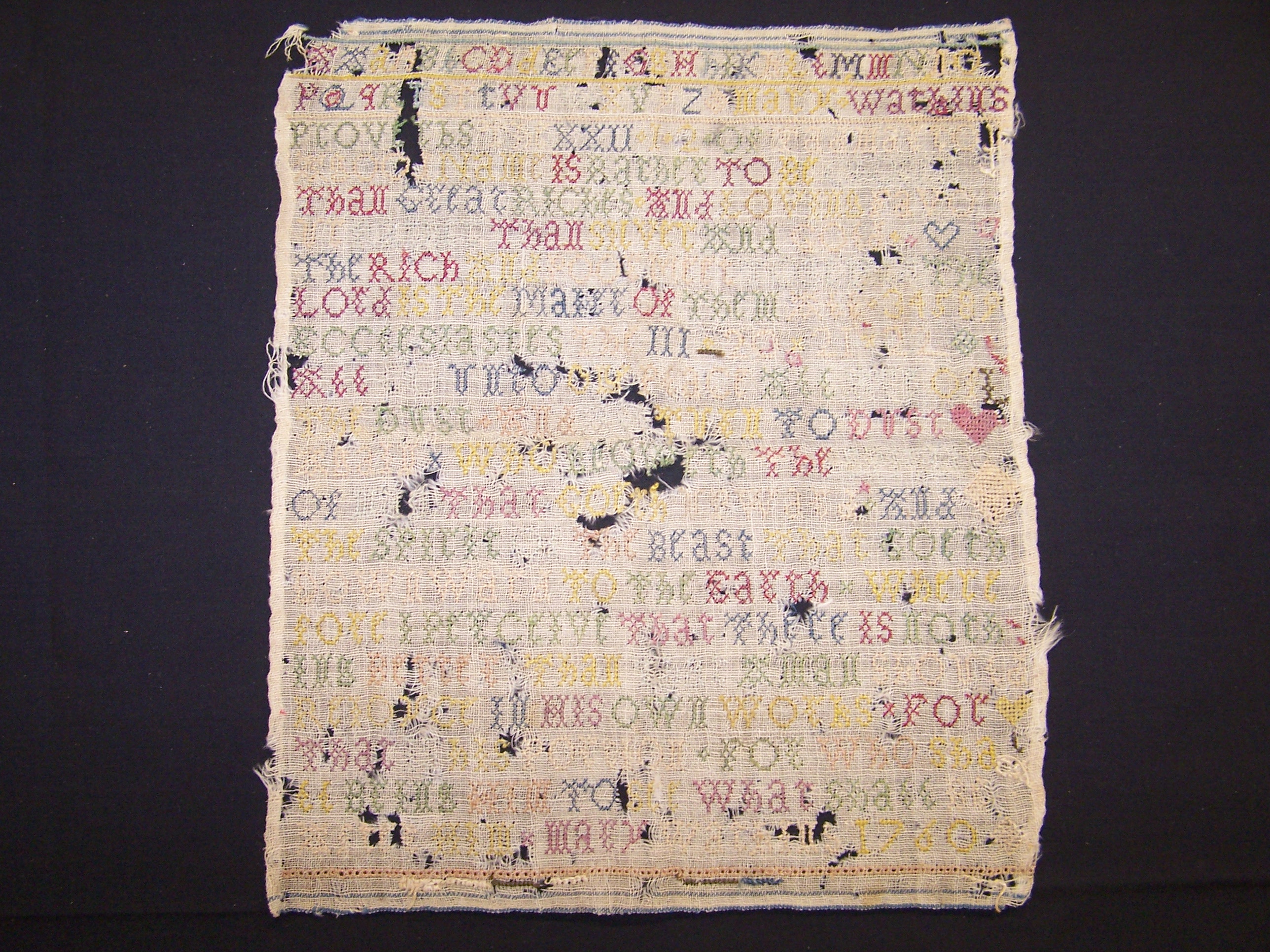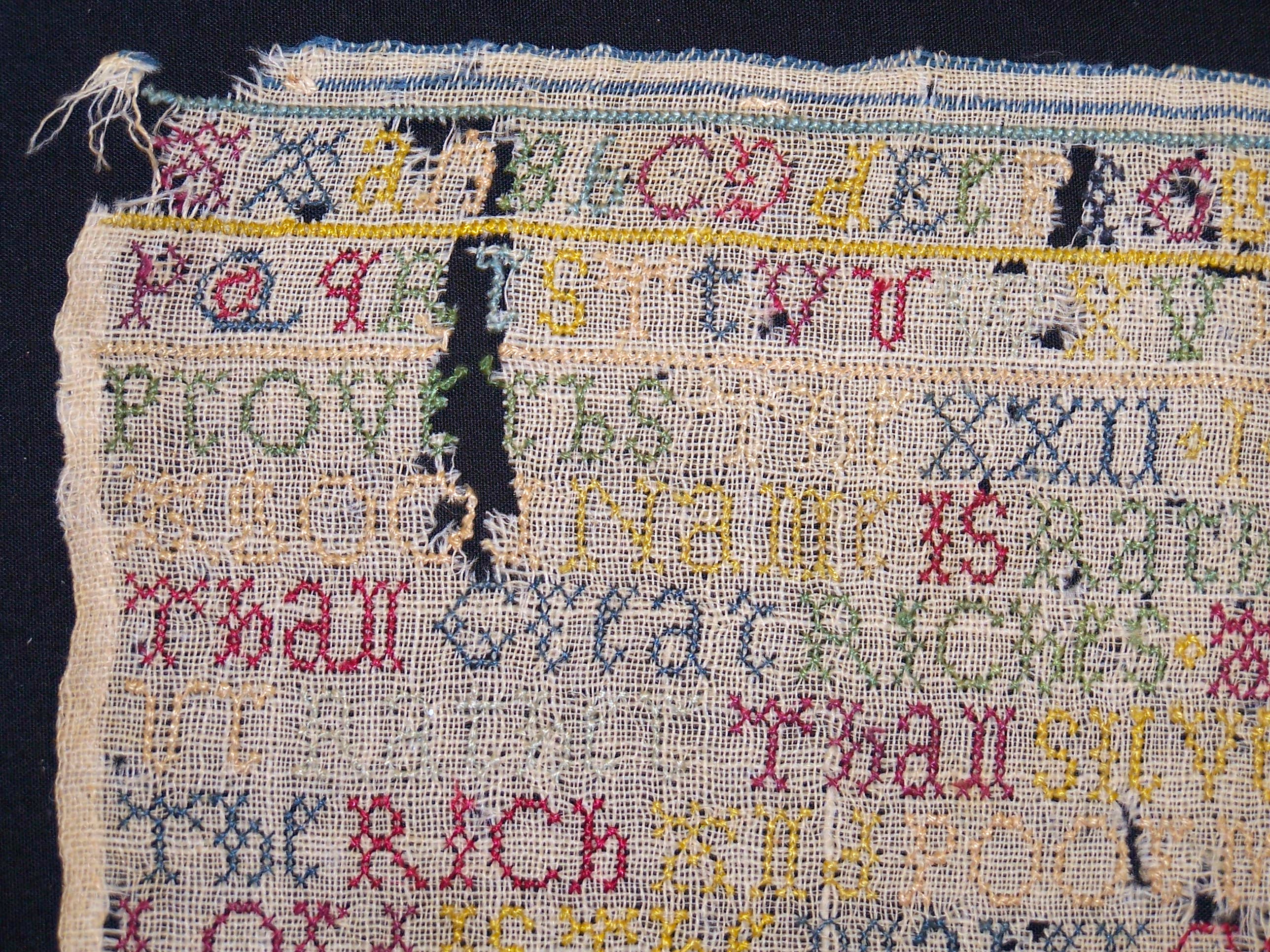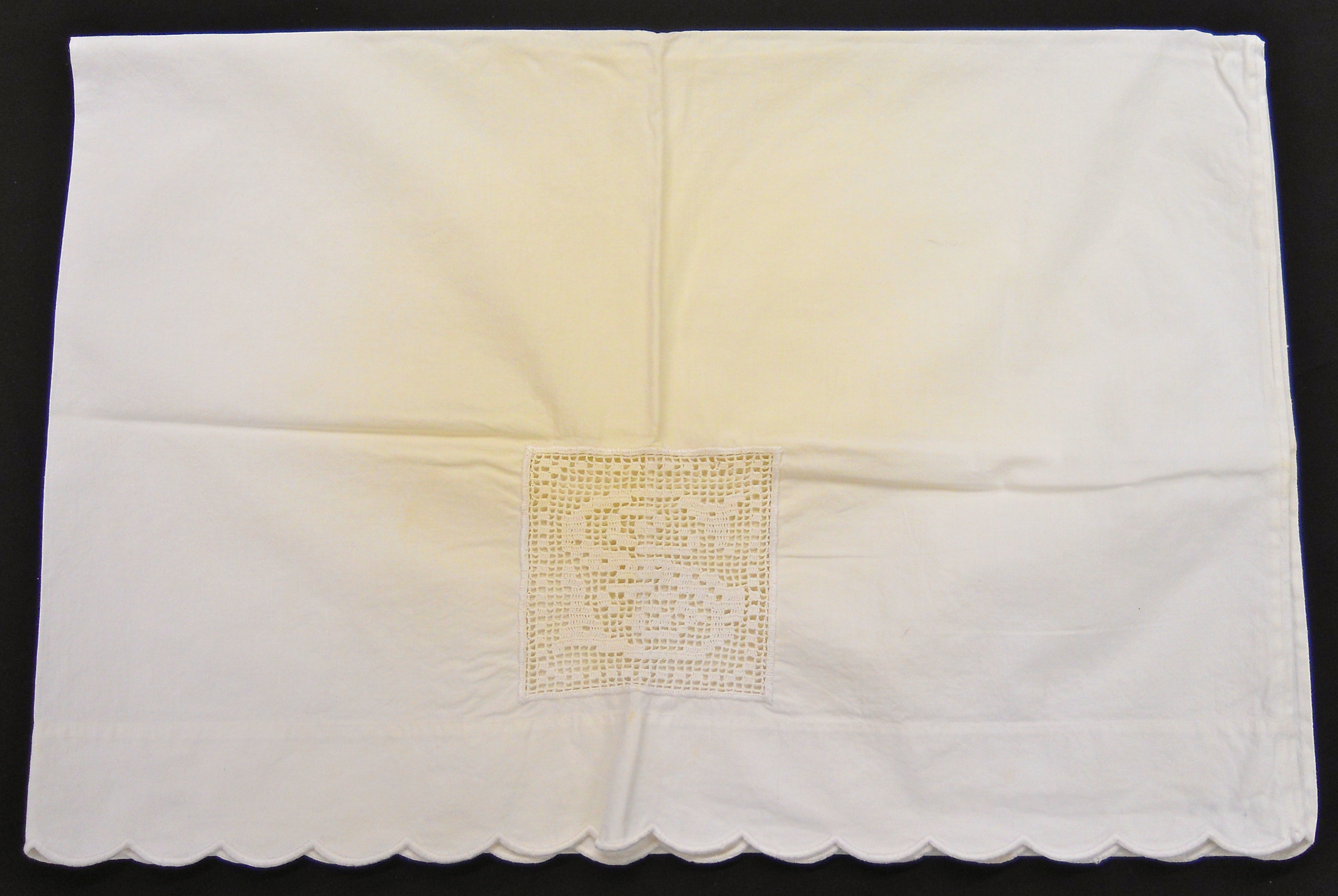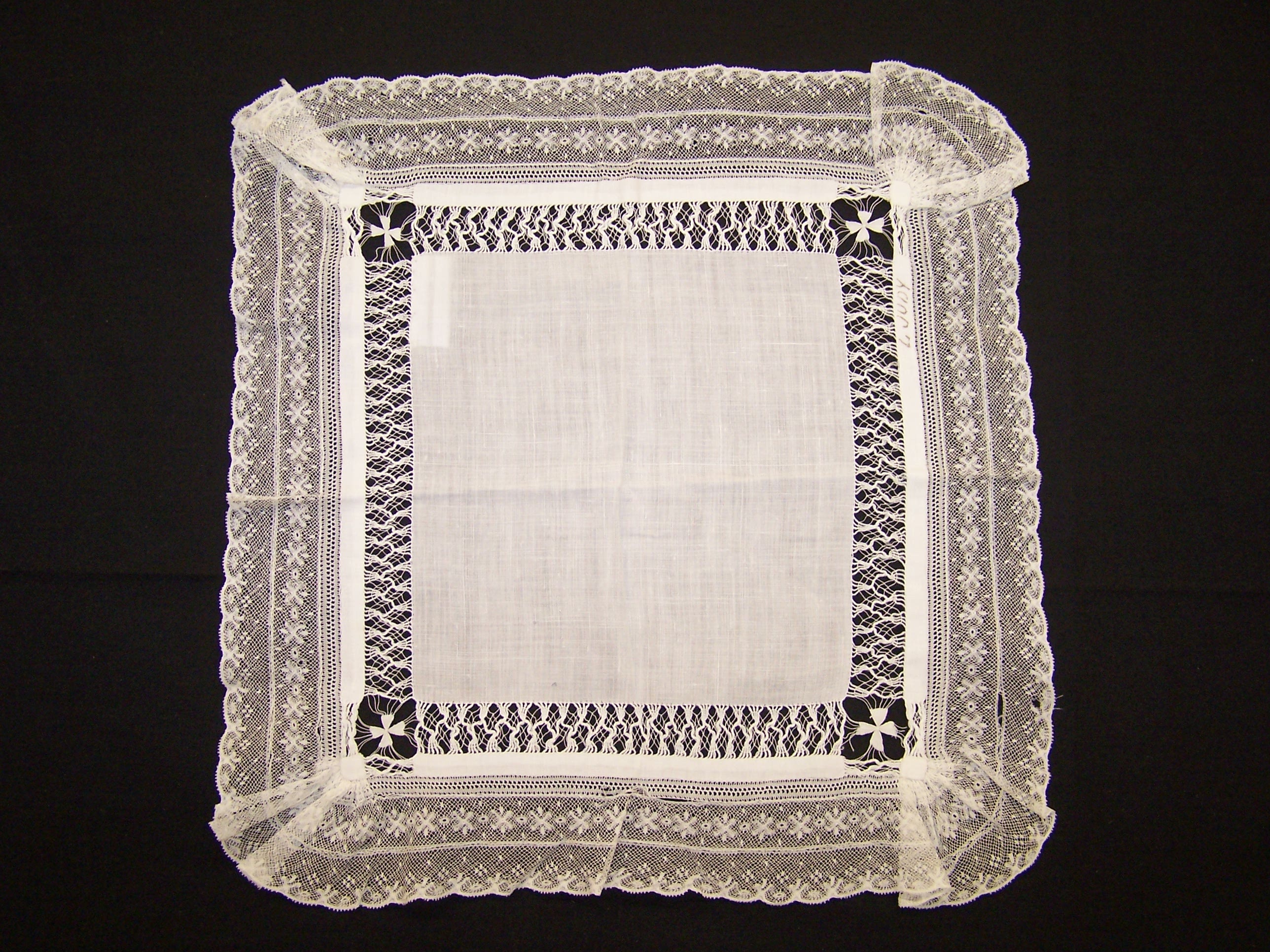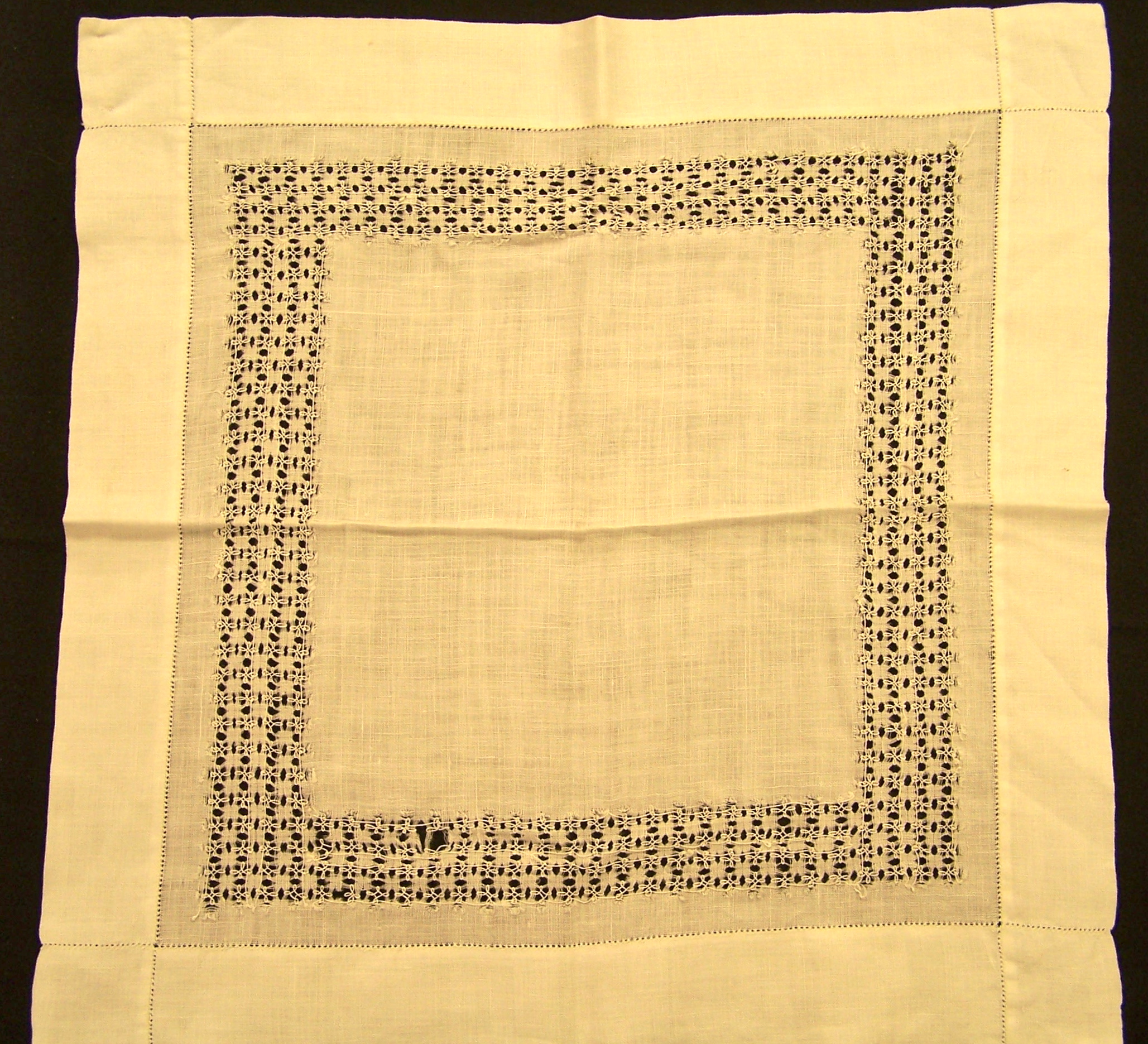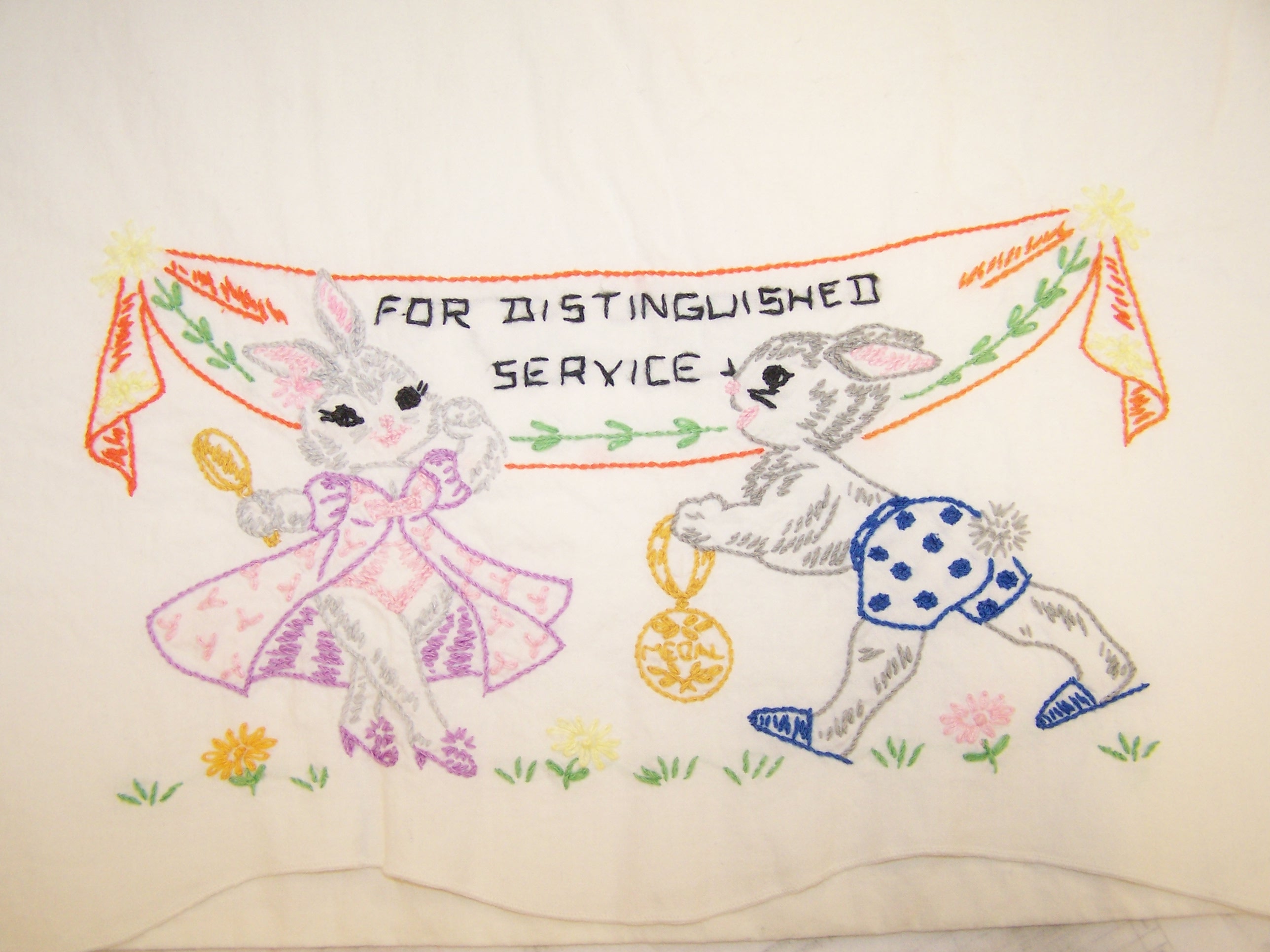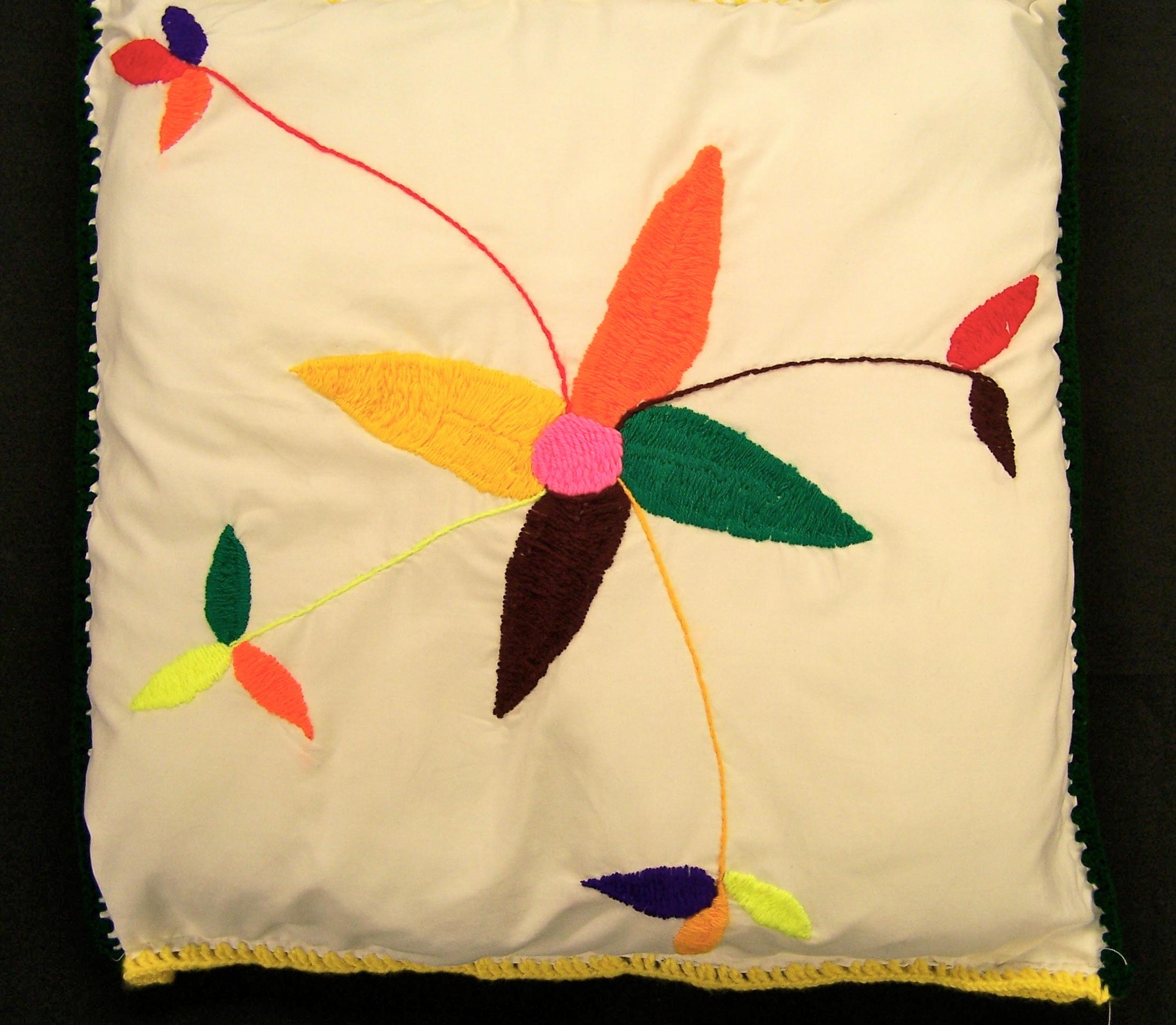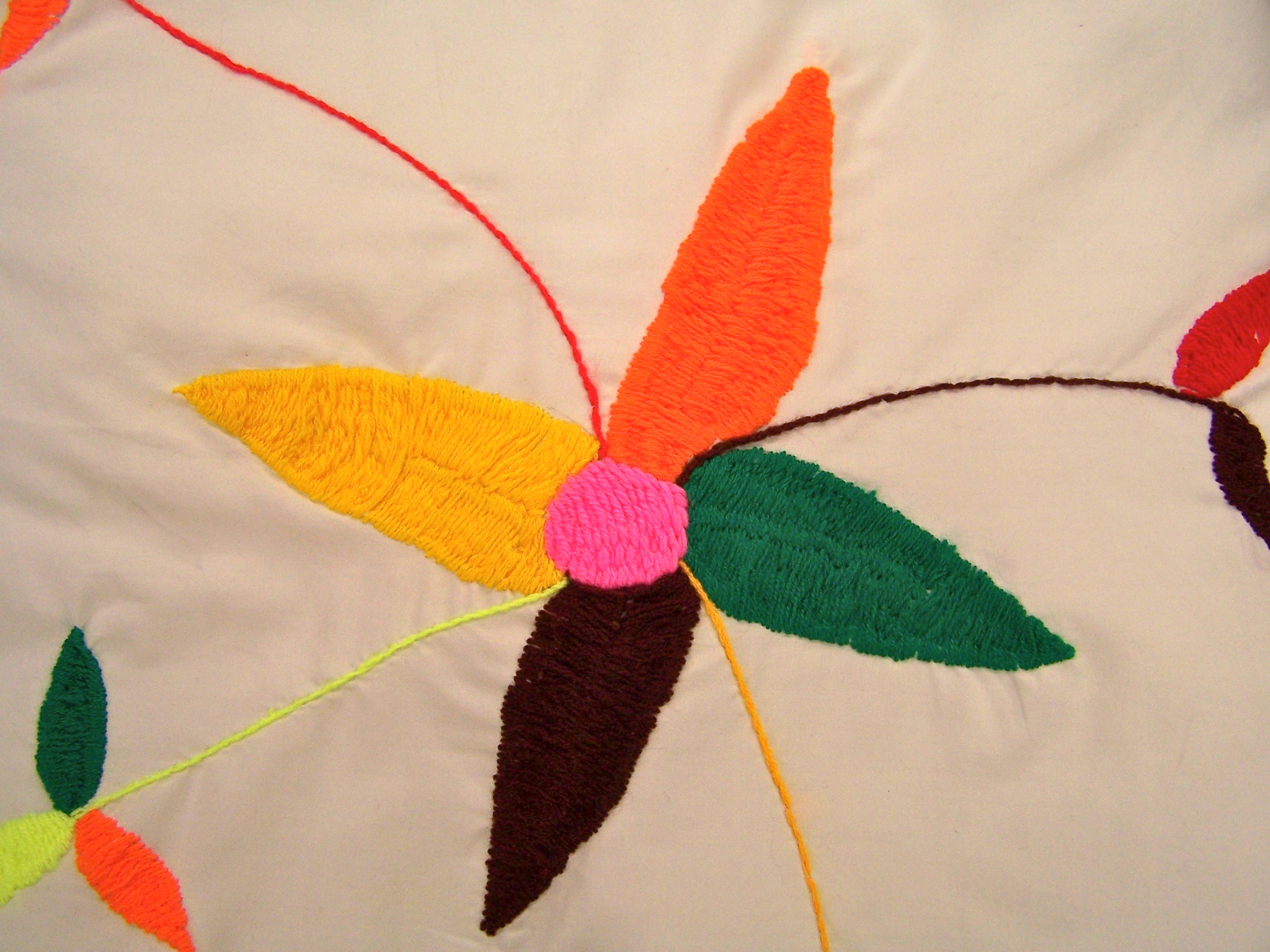Needlework Samples
Figure 1.
A Sampler made by Mary Watkins in 1760 in Shennington, England.
Figure 2.
This sampler was held on by Mary Watkins’ family. Later, her great-great granddaughter donated it to the Idaho museum. This particular Sampler displays Proverbs and Ecclesiastes verses.
Figure 3.
Emma Alexander Simons was born in 1879 and was a delegate for the Democratic National Convention in Idaho from 1940-1948.
Figure 4.
This pillowcase was part of Emma Simon’s trousseau when she married. A trousseau is similar to a bride’s dowry, the bottom drawer of a chest where fine linens and pillowcases might be kept until a young girl was to be married. Much of what we now would consider a “starter set” for marriage.
Figure 5.
Dorothy Clapp Robinson was born in 1892 and died in 1968. She made this Hardanger handkerchief and was a published author with such stories as A Half Million Mile Buggy Ride, which is a story about a mailman in Chesterfield, Idaho.
Figure 6.
Closeup of Dorothy Robinson’s handkerchief.

Cynthia Pease made this needlepoint on cardboard at the age of 7. Idaho State Historical Society. 1920.12.0 old 499.
Figure 7.
Cynthia Pease was born in 1853 and made this needlepoint on cardboard at the age of 7. A picture here shows her at age 9 (see Fig. 17). Cynthia Pease married Samuel Mann and was a distinguished member of the National Society Daughters of the American Revolution – Pioneer Division.
Figure 8.
Cynthia Pease Mann is also a well known Idaho pioneer teacher. To read more about her remarkable life visit Cynthia Mann and her accomplishments.
Figure 9.
Zoe Helen Judy married J.W. Strohecker May 15, 1915 in Pocatello, Idaho. J.W. died in a mine accident in Keystone, MT on May 28, 1917. They were fortunate enough to have been married for 2 short years.
Figure 10.
This handkerchief could have been used at a church service. Not necessarily used as a tradition handkerchief for the use of wiping your nose, but would be placed in a female’s purse or in her Bible. Often times, females would give their handkerchief to a man that they were interested in.
Figure 11.
Was made by Mary Shell for her husband returning from WWII. Mary Shell was born on April 27, 1919. She recently passed away on March 16th 2011 at the age of 91. Out of love for her husband, Mary made these two pillowcases. This pillowcase depicts Mary’s gratitude for her husband’s distinguished service to United States Navy.
Figure 12.
The second pillowcase, depicts Mary Shell’s love for her husband, as the World’s Greatest Lover. John R. Shell Jr,. served overseas in the Navy during World War II. Mary and John are depicted as rabbits on these pillowcases.
Figure 13.
This pillow was made by Fatuma Haji who became a U.S. Citizen in 2010 after living in Boise for six years.
Figure 14.
This pillow reveals her Somali Bantu heritage which she describes as reminding her of home, her family and her country.
Figure 15.
This quilt was a friendship quilt made in the 1930s around the Homedale area of Idaho. The quilt was made by the ladies of the Central Cove Church. Homedale had approximately a population of 225 people in 1930. So, this friendship quilt was probably quite the social event for these ladies.
Figure 16.
Closeup of the quilt’s needlework. Each square section has a needlework stitches into the quilt.
Figure 17.
Cynthia Pease Mann posing for a portrait. By age 7 she was already excellent at needlework. Later she would become an important figure in Idaho history. For more information please view: Cynthia Mann History, accomplishments, DAR Chapter of Idaho, and “It was happiness to serve“.
